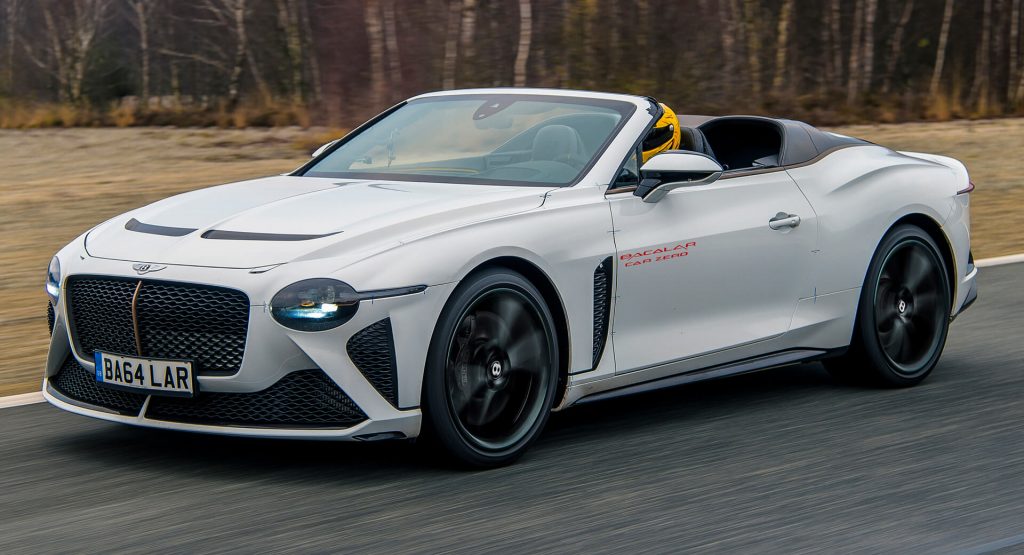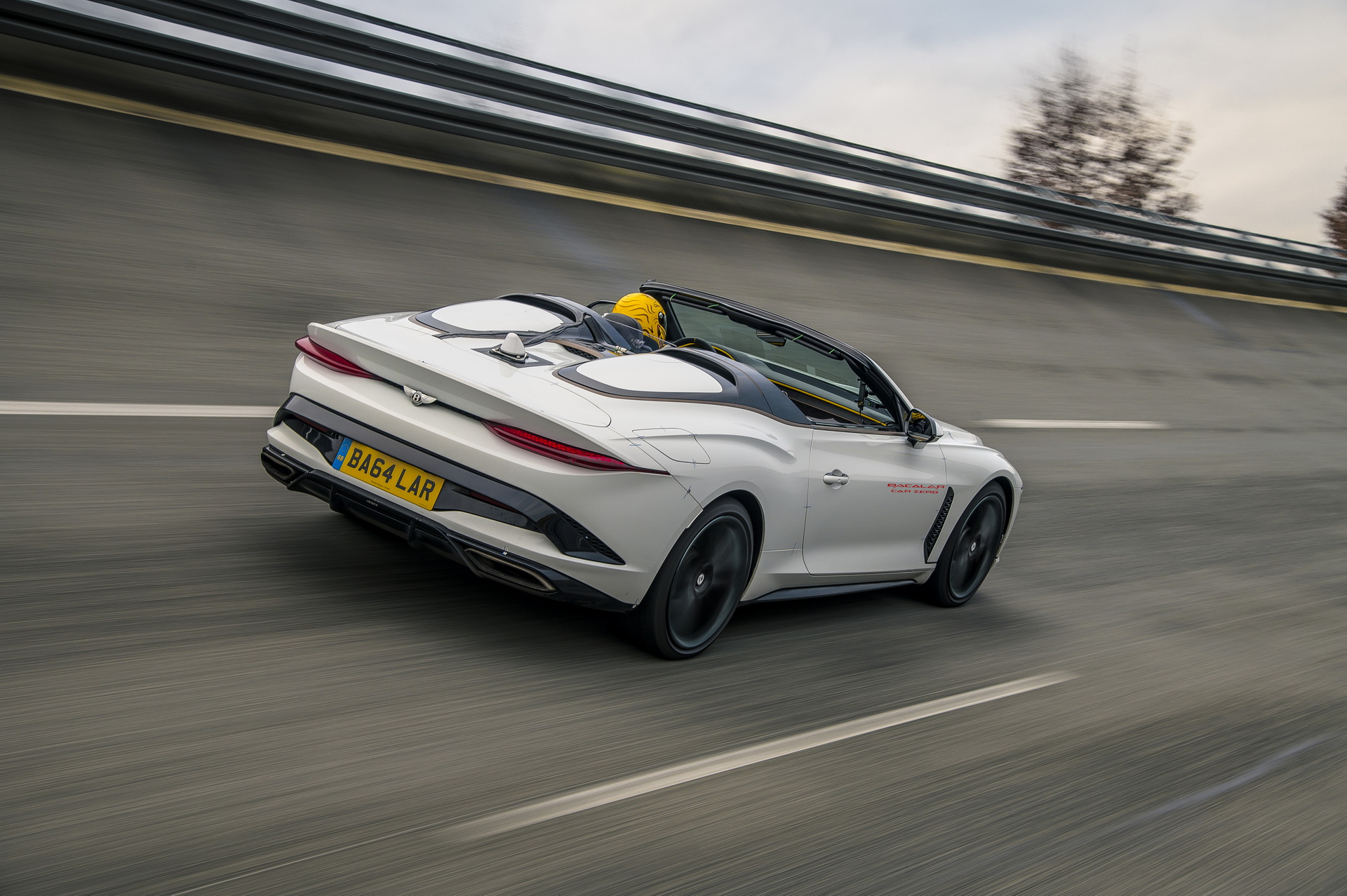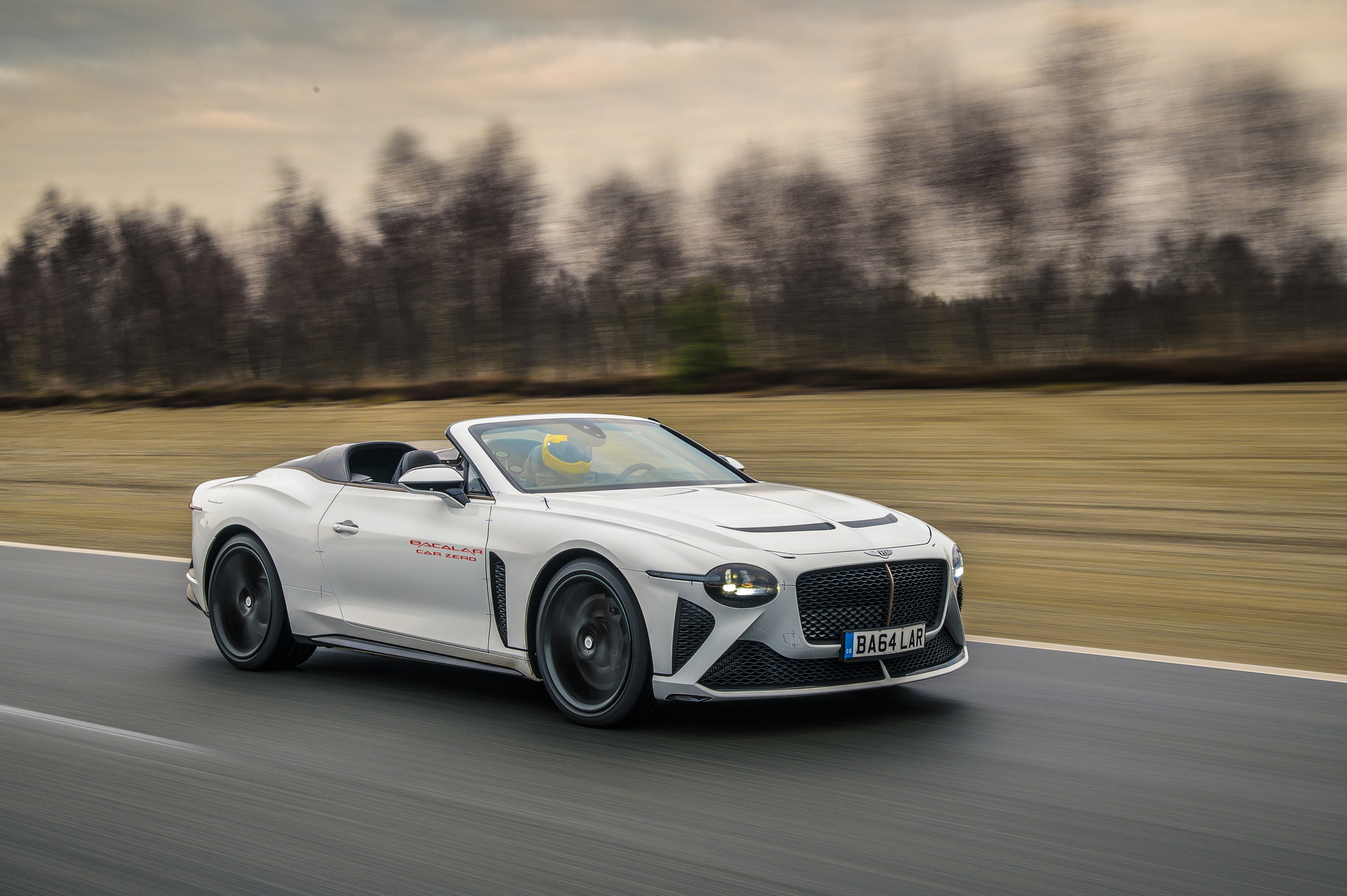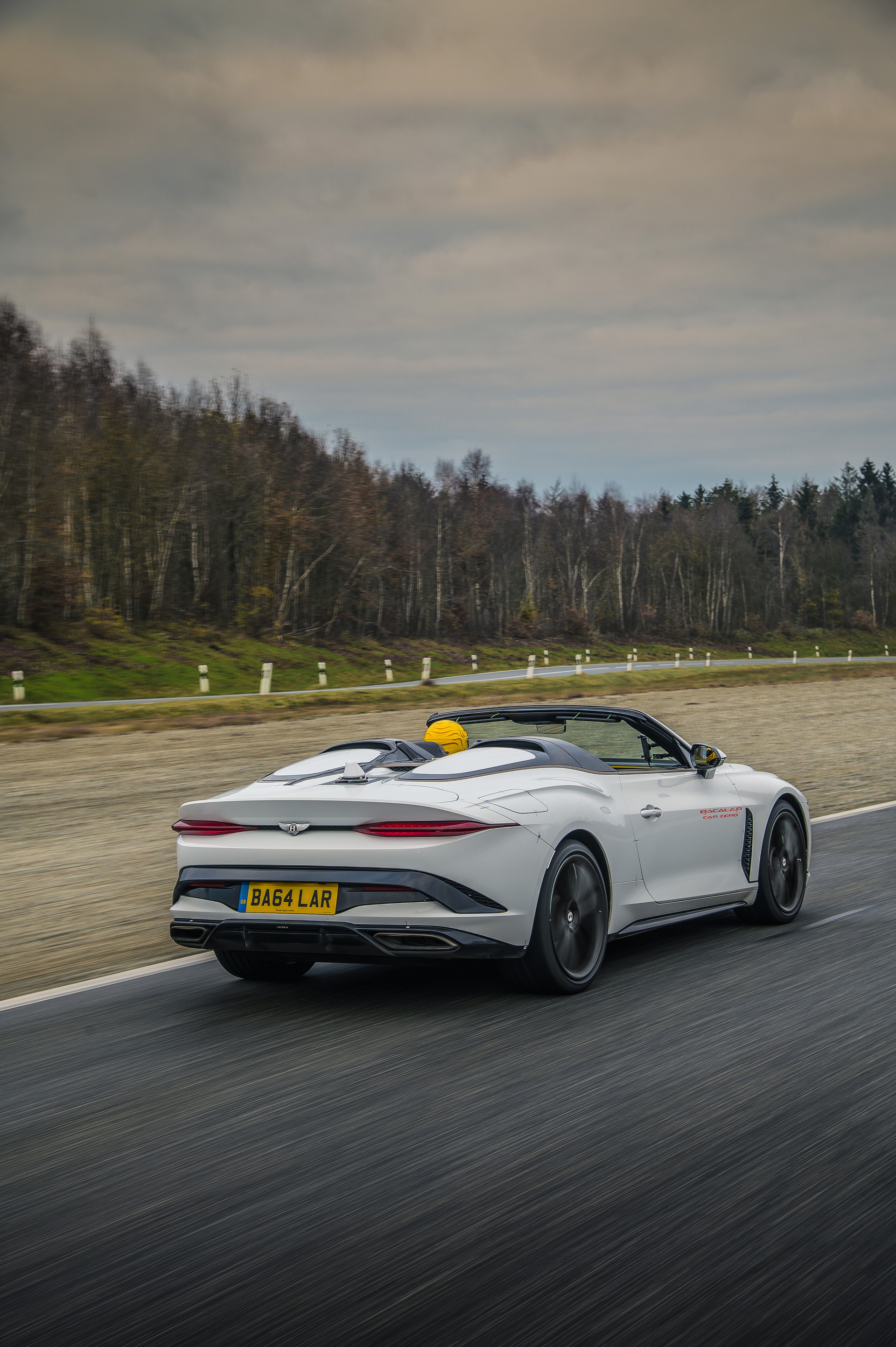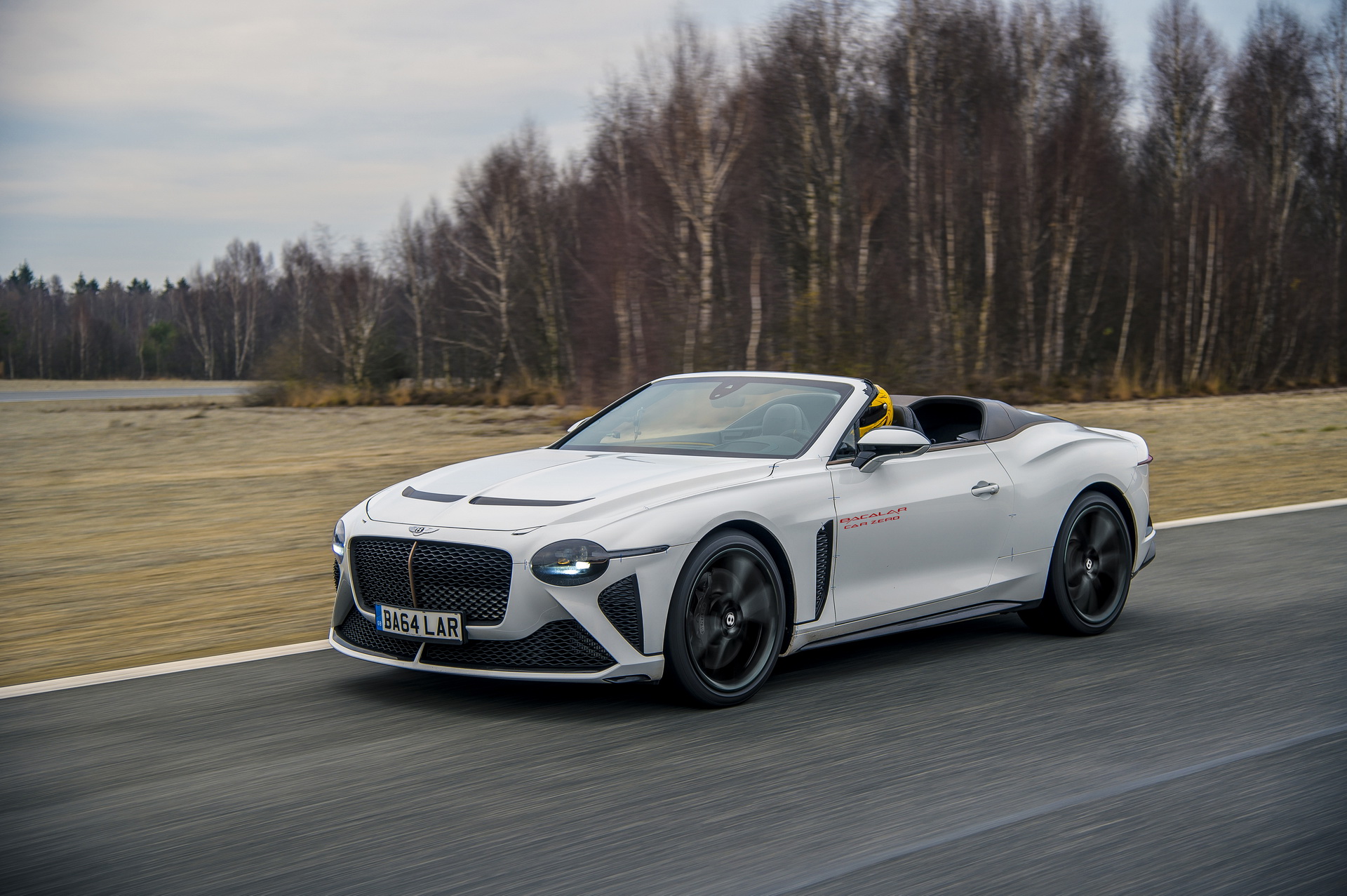After revealing the ‘Car Zero’ of the Blower Continuation Series last week, Bentley has now presented the pre-production version of the Mulliner Bacalar, which will be used for durability testing and for validation.
Subsequent to evaluating the car’s aerodynamics, noise, vibration, handling and top speed, the prototype of the coach-built model, which is also referred to as ‘Car Zero’, is already accumulating miles in Europe.
In the next leg of the journey, which will conclude with the assembly of the 12 pre-sold customer cars next year, it will be subjected to extreme weather testing in temperatures of up to 80C (176F), while also having its electrical system validated.
At the end of the 20-week validation program, Bentley will have tested all components, including the new 750 parts exclusive to the Bacalar, 40 of which were made of carbon fiber, with almost 100 produced using “rapid additive manufacturing techniques”.
Read Also: 2021 Bentley Continental GT Mulliner Revealed As Series’ New Luxury Pinnacle
“Very much like Blower Car Zero that we unveiled last week, Bacalar Car Zero is the crucial prototype that we’re using to sign-off the design, engineering and craftsmanship of this ground-breaking part of Bentley Mulliner’s future”, the Mulliner Director, Paul Williams, explained.
“The Bacalar is a thoroughly modern iteration of the coach-built Bentleys of the past – extremely rare, entirely hand-crafted, totally bespoke to each customer and exquisite in its details. The whole team behind the car is thrilled to see the prototype shrugging off every test we throw at it, and we’re really looking forward to starting the build of the 12 customer cars.”
Inspired by the 2019 EXP 100 GT Concept, created by Mulliner and named after the Laguna Bacalar in Mexico’s Yucatan peninsula, the eponymous car was presented back in March.
It packs a twin-turbo 6.0-liter W12 engine, rated at 650 HP (659 PS / 485 kW) and 664 lb-ft (900 Nm) of torque. The unit is connected to an eight-speed dual-clutch automatic transmission and an all-wheel drive system that splits thrust between the front and rear axles – although for optimum efficiency and performance, the car uses the rear-wheel drive as much as possible. Top speed stands at 200+ mph (322 km/h).







